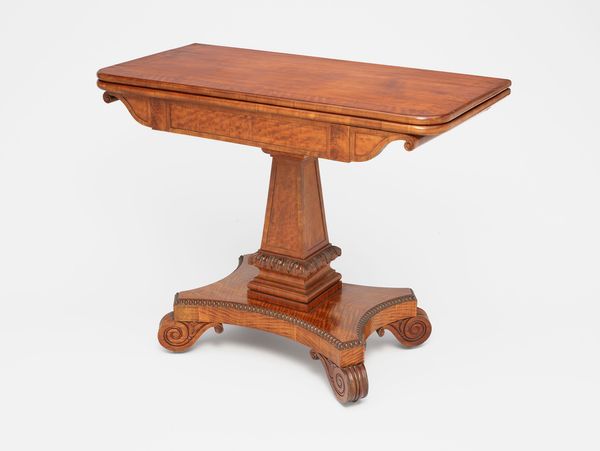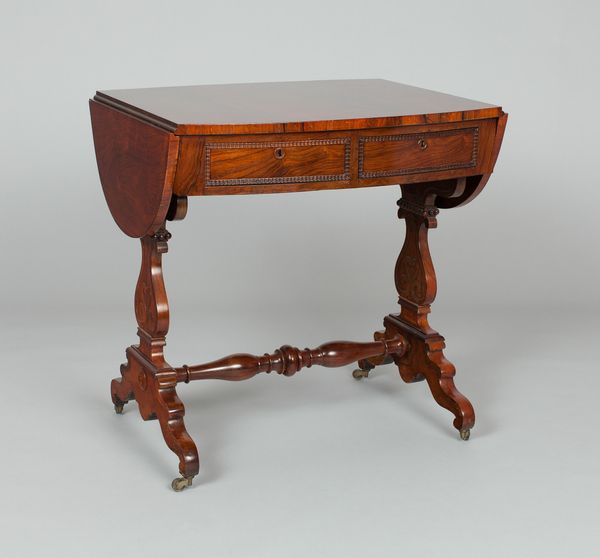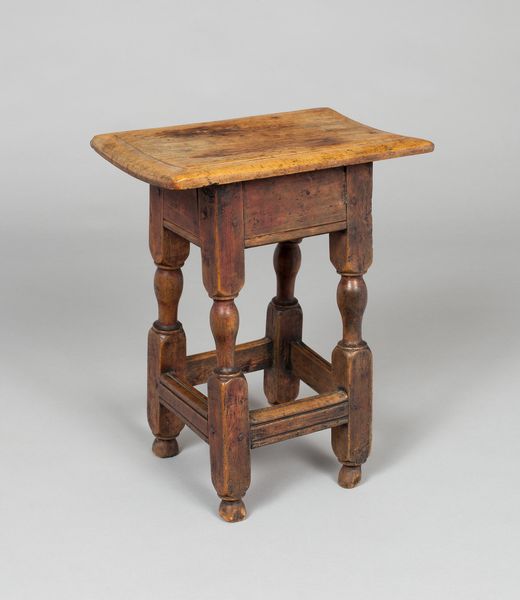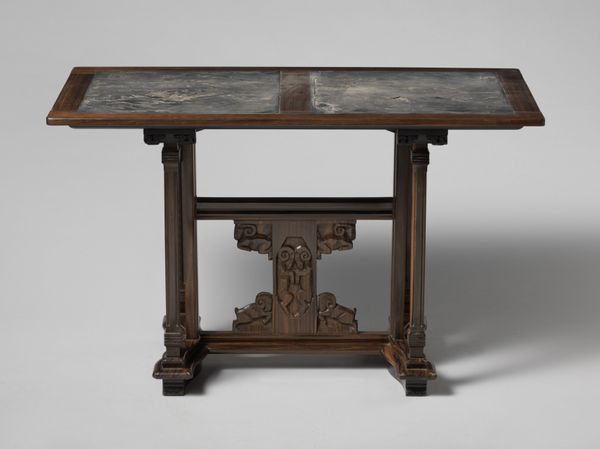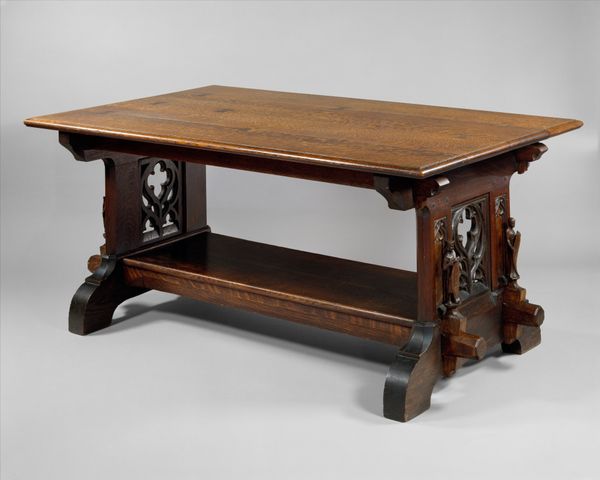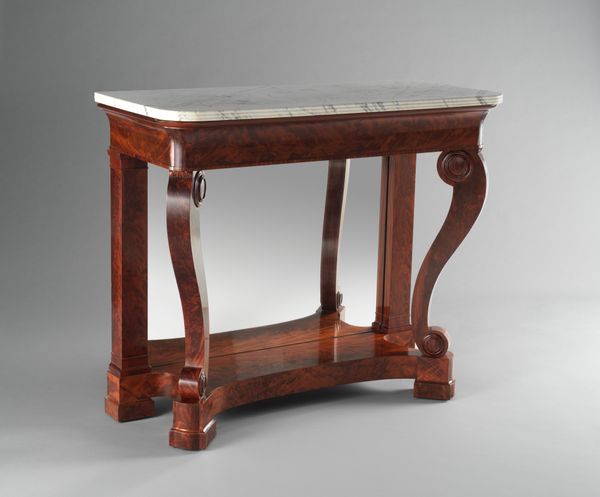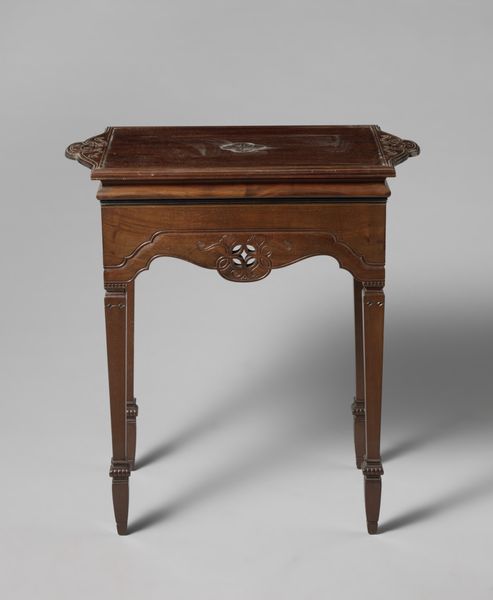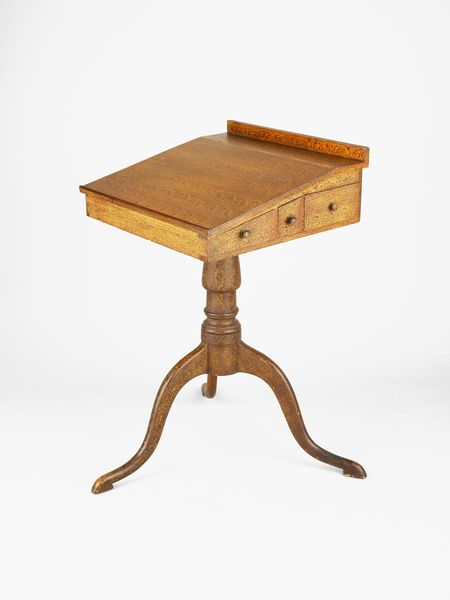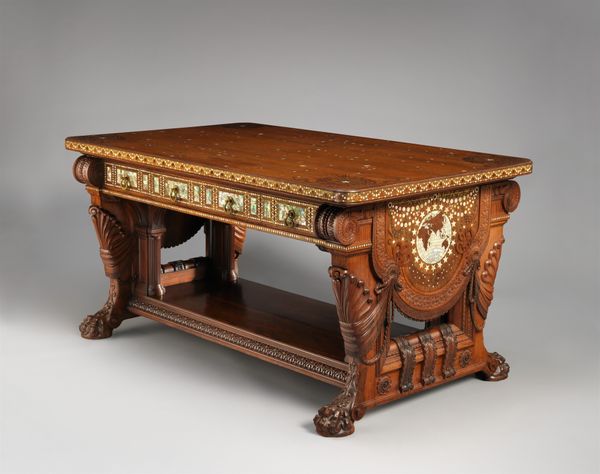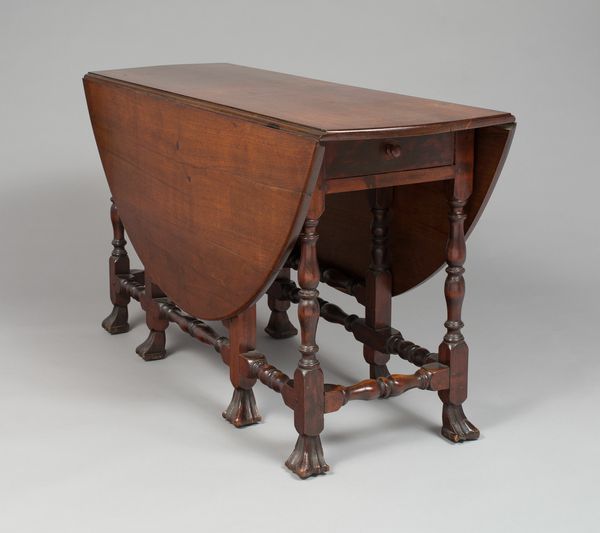
wood
#
neoclacissism
#
furniture
#
wood
#
decorative-art
Dimensions: height 74.7 cm, width 88.5 cm, depth 44 cm, width 88 cm, depth 88.5 cm
Copyright: Rijks Museum: Open Domain
Editor: This "Speeltafel," or Games Table, dates back to around 1820. It’s crafted from wood, and what strikes me is how functional it is while maintaining an air of elegance. What’s your perspective on this piece? Curator: From a historical point of view, this table embodies the rise of leisure culture among the bourgeoisie in the early 19th century. Neoclassicism in decorative arts reflected a desire to connect with the perceived order and virtue of ancient Rome and Greece, but made accessible for middle class patrons. Note how it’s not ostentatious. Editor: That's interesting. So, it wasn’t about opulent display, but a subtle suggestion of cultivated taste? Curator: Precisely. Consider how such furniture impacted social interactions. Card games were important social rituals, often laden with implications of class and status. Owning such a table signaled a family’s position, and ability to partake in, or mimic, genteel pastimes. Who was invited to the games became quite a statement! Editor: That puts a whole new spin on something as simple as a table. I guess owning beautiful objects, back then and even today, can reinforce social hierarchies. Curator: Yes, how do you see the design, considering it has to hold a game but look elegant at the same time? What are the power structures inherent to gaming? Editor: Looking at it that way, the table's understated design might mask a lot of societal nuances! Thanks, I’ll remember that when studying art in a museum context. Curator: Absolutely! Analyzing art involves unraveling the threads of its social and historical context, just like pulling back the corner of that games table.
Comments
No comments
Be the first to comment and join the conversation on the ultimate creative platform.
